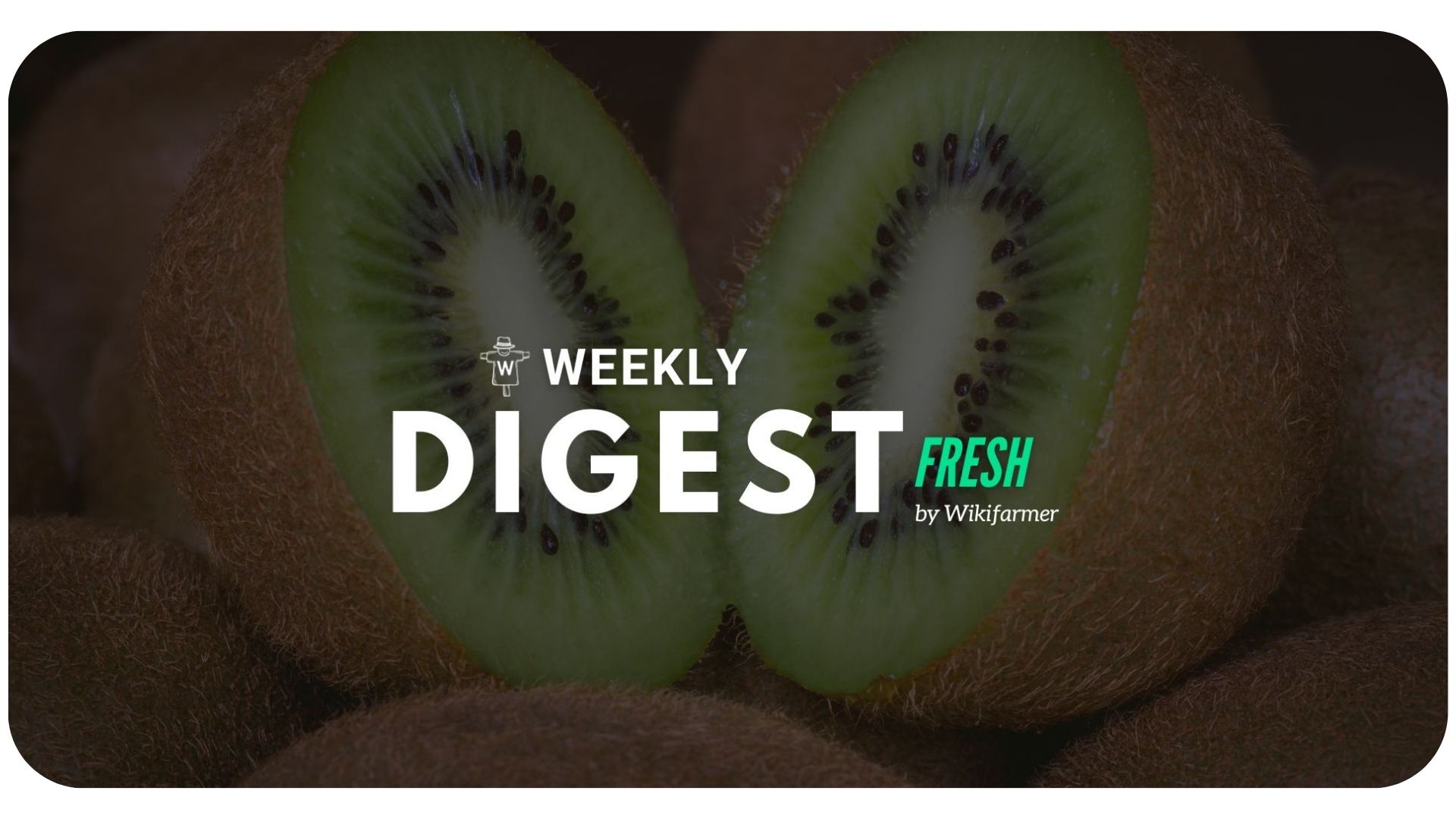Kiwi Market Digest w46

Fresh Insights from our Farmers
Last week, our sourcing director for fresh fruits and vegetables visited various producers that regularly sell through our platform. This is a part of our routine visits to gain new insights into the market conditions from the suppliers' perspective. According to our farmers, and confirmed from our transactional data, it seems like the market has delved into a period of stability, with deals being rather limited. Most market perpetrators have piled up kiwi in large quantities at the beginning of the season, regardless of whether it was ripe or not, simply because it was available at a bargain price. As a result, the market is now experiencing a shortage of ripe kiwi fruit available for sale.
This has caused more harm than good in terms of quality, as unripe kiwi can never get to the appropriate BRIX levels for consumption or even industrial processing, no matter how long it stays in storage. As a result, many operators need to force the kiwifruit they’ve stocked down the distribution chains by selling it at outrageously low prices.
But making hasty moves with only short-term profits in mind can destroy the long-term prospects of operators. And not only that, but they now actually fail to benefit even short-term, since they are made -according to current market conditions - to sell at prices lower than cost.
Once again, we see how important it is for all participants of the kiwifruit market (as in any other agricultural market) to make the optimal (in terms of time frame and finances) decisions on positioning their product in the right markets.

Price Updates
Data from the latest update of the Federal Ministry of Food and Agriculture in Germany testifies to the above observations, as prices for European produce have followed a negative trend in the last weeks.

As a point of reference, we use pricing data for Greek and Italian kiwifruit of caliber 30/33. The rather significant difference in the price for fruits of the two origins is accredited to the vastly higher supply of Greek fruit, due to the moria disease impacting kiwi supply in Italy.
Steps Towards the Further Globalization of the Market
Italy is making steps towards improving its phytosanitary protocols in the fruit trade, intending to overcome typical export barriers of a relevant nature. This comes after decades of deficient phytosanitary tests and non-transparent practices in the agricultural markets, which operators, even those that have benefited the most from them, have come to realize are only detrimental to their business causes.
-1.jpg?upscale=true&width=520&upscale=true&name=Untitled%20design%20(9)-1.jpg) This change is one more development in the line of various steps towards expanding the international kiwifruit trade. As we discussed in the previous digest, this will steadily create a virtuous cycle, imposing to more and more market operators to abide by the standard practices (that will continuously evolve to better fit the consumers’ needs), through the alerted ‘discipline of the market’ that lurks over big networks of partners.
This change is one more development in the line of various steps towards expanding the international kiwifruit trade. As we discussed in the previous digest, this will steadily create a virtuous cycle, imposing to more and more market operators to abide by the standard practices (that will continuously evolve to better fit the consumers’ needs), through the alerted ‘discipline of the market’ that lurks over big networks of partners.
Wikifarmer's Edge
To facilitate the interest of both farmers and B2B buyers of fresh produce, Wikifarmer negotiates with a worldwide network of suppliers to secure a steady supply of all the main kiwifruit varieties at reasonable prices. Our team can help both sides with price negotiation, credit terms, and logistics and transportation arrangements. We also implement strict Quality Assurance procedures, making sure that producers provide us with all certificates that prove their claims about their products, and that all relevant analyses take place.
This way, producers can market their products, and B2B buyers can source the product that best matches their quality needs and budget.
.png?width=450&height=87&name=New%20Logo%20(1).png)